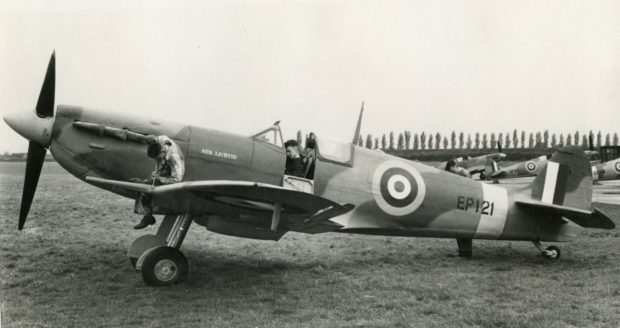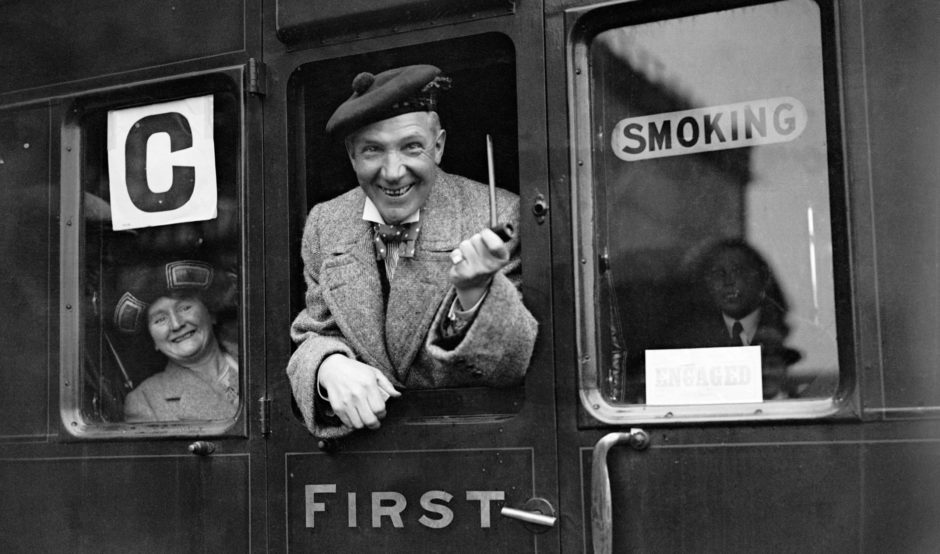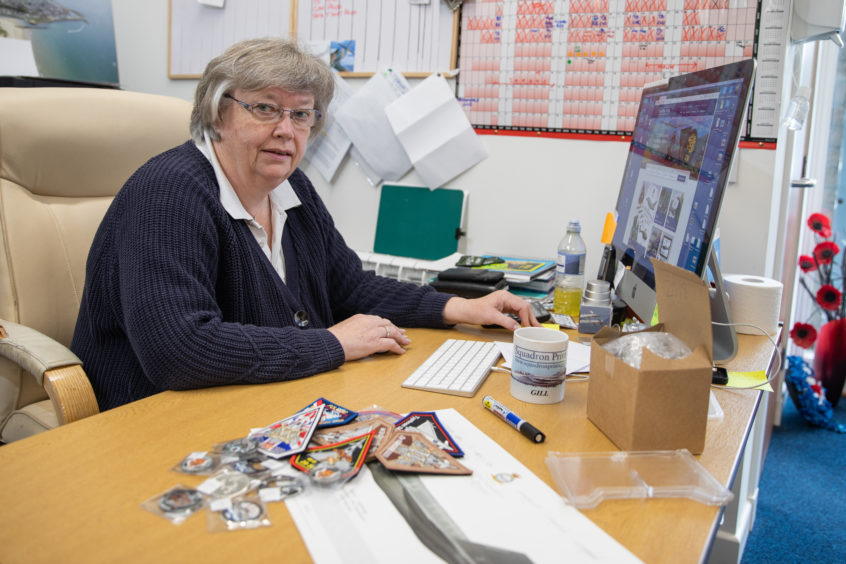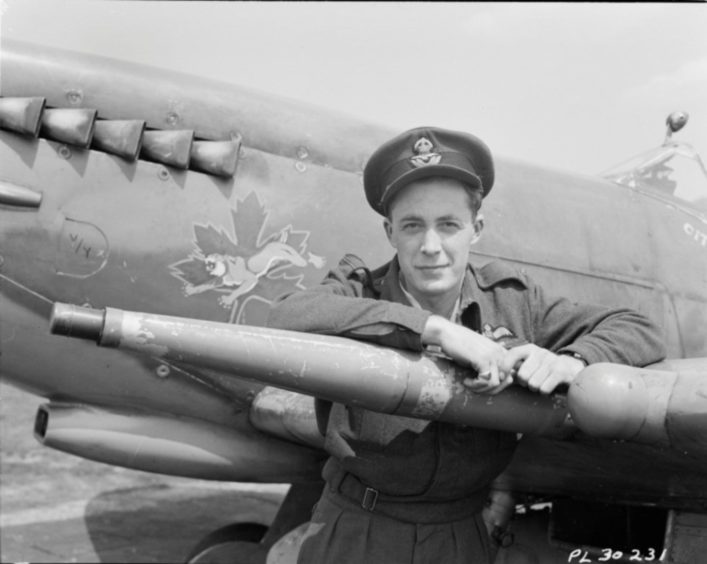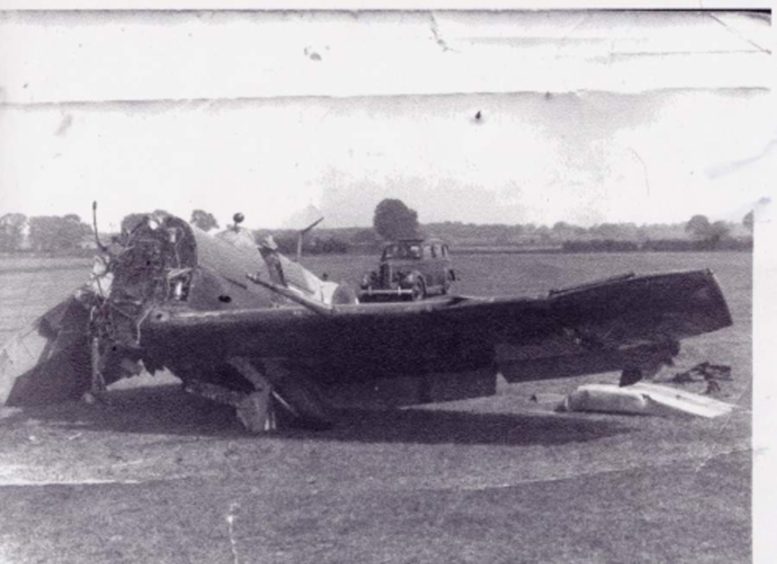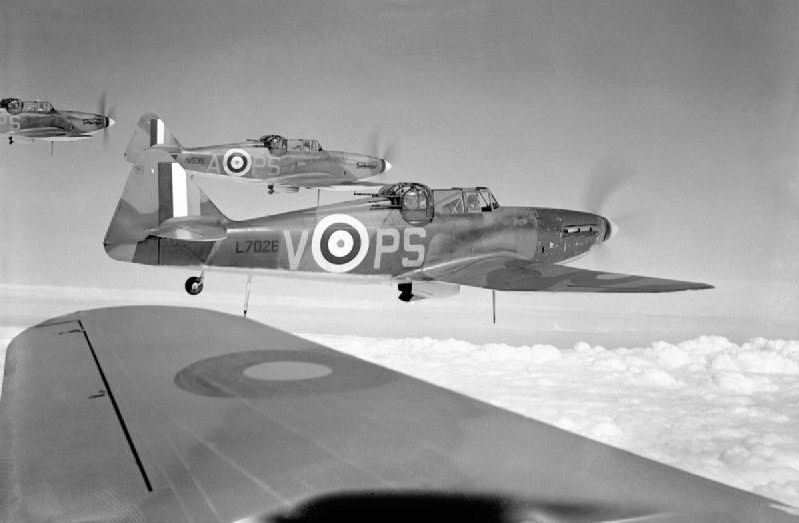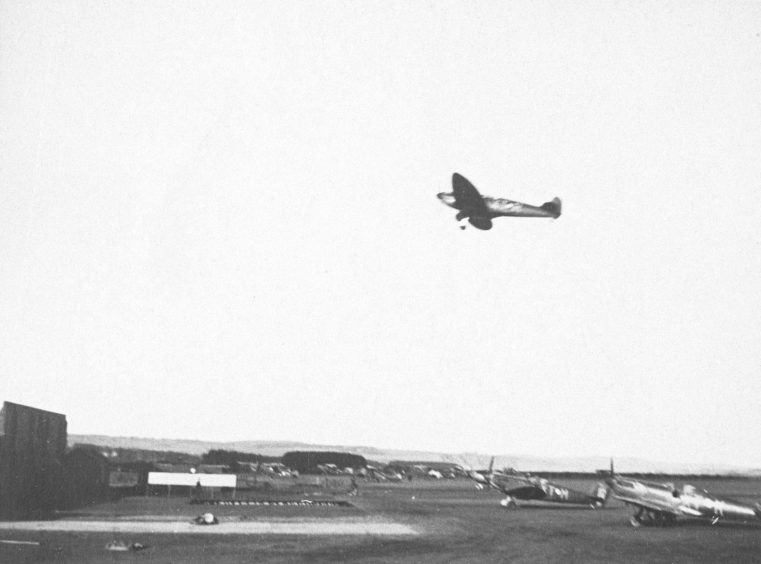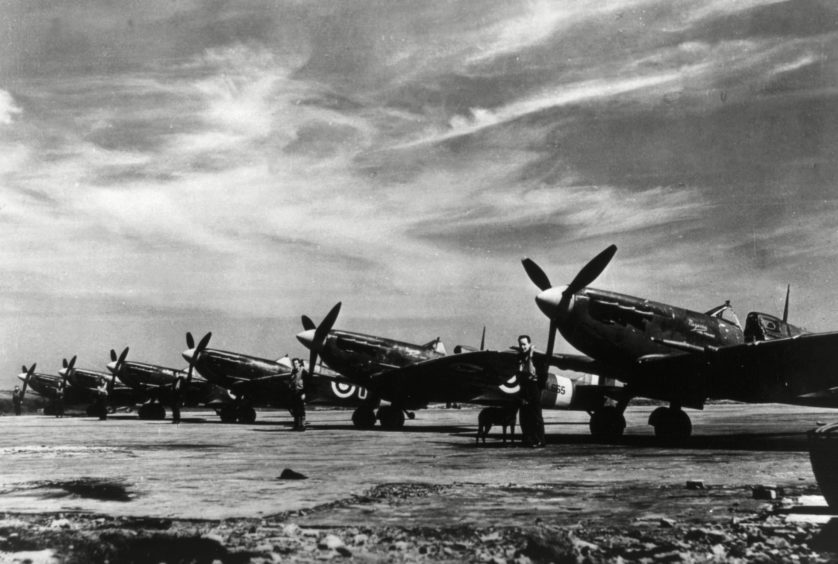It was the Spitfire bought by the people of Arbroath which went on to battle the Luftwaffe before being relegated to the scrap heap.
During the Second World War, the people of Arbroath started a “Spitfire fund” to raise £5,000 to purchase a plane to help with the war effort.
One of the first fundraising events in the town was a concert starring Sir Harry Lauder, who was, at one time, the highest-paid performer in the world, making the equivalent of £12,700 a night plus expenses, and was the first British artiste to sell a million records.
Other events included a male voice choir from the Polish Army, a boxing tournament at Gayfield and a dance organised by the burgh police.
By March 1942, the town had hit the £5,000 target and a MkVb Spitfire was built by Vickers Armstrong at Castle Bromwich Aircraft Factory in the West Midlands and fitted with a Merlin 46, 1415hp engine.
Aviation enthusiast Gill Howie of Arbroath firm Squadron Prints said it was important to remember the Spitfire associated with the town on the 80th anniversary of Battle of Britain Day.
She said: “I am an aviation enthusiast, which is somewhat unusual for a girl – I live in Arbroath and have done since the age of 11 so I consider myself ‘a local’.
“That pride in my town and interest in aviation was enhanced with my research in to Arbroath’s Red Lichtie Spitfire which developed into a passion.
“Those that fought for our town and country so many years ago should never be forgotten but equally those who battle for other causes should be applauded.
“Community Spirit is vitally important these days and people do forget that.
“Covid-19 brought out some of that ‘wartime’ spirit by looking after each other but sadly many forget the sacrifices given by many who went before us.”
The EP121 was named the Red Lichtie before its first operational posting to No. 501 (County of Gloucester) Squadron, flying from Ibsley in Hampshire.
It would later fly with No. 131 (County of Kent) and No. 610 (County of Chester) Squadrons before joining No. 602 (City of Glasgow) Sqn in the spring of 1943.
On February 13 1943 Squadron Leader, later Air Vice-Marshal James Edgar “Johnnie” Johnson, one of Britain’s most distinguished fighter aces of the Second World War – flew the Red Lichtie on a mission over Boulogne in occupied France, where it is thought he downed a German Focke Wulf 190.
Johnson was a flying ace who was credited with 34 individual victories over enemy aircraft, as well as seven shared victories, three shared probable, 10 damaged, three shared damaged and one destroyed on the ground.
On June 10 1943, EP121 was transferred to No. 416 (RCAF) Squadron at Digby, Lincolnshire.
It was here on June 29 1943 whilst on approach to the airfield, that the aircraft’s engine cut out and it stalled and spun into the ground, injuring the Canadian pilot Sergeant William Palmer.
On the day of the accident the squad were on a formation exercise over the North Sea.
The aircraft’s fuel burned faster than anticipated, but Palmer was reluctant to break radio silence and by the time the spitfire was back at base, the tank was close to empty.
At about 100 feet above the aerodrome he advanced the throttle and the engine lost power.
The aircraft gave a short shudder and began to auto-rotate at the beginning of a full stall.
With less than 50 feet of elevation, there was not enough altitude to lower the nose to un-stall the aircraft.
The result was a rapid impact with ground that broke the aircraft in several places and scattered the wreckage over about 150 feet.
The strength of the cockpit probably saved Sgt Palmer’s life but the aircraft was written off and scrapped.
Palmer eventually died in an aircraft accident on July 15 1968.
No aircraft captured the imagination of the public during the second world war in quite the way the Spitfire did.
The RAF had about 300 Spitfires fighting in the Battle of Britain at any one time, with total combat losses estimated at about 260.
The fame that the Spitfire gained was worthy of a Hollywood star and when the Government appealed for public assistance in building them, the country took this appeal to heart and donations poured in.
Britain still was saddled with debt it had gathered during the last war and as a result of the depression, so the need for extra cash was serious.
Lord Beaverbrook set up a team to work on a variety of campaigns to raise more funds and from this the Spitfire fund was borne.
Appeals would be made to towns, counties and workplaces to raise £5,000 to buy their ‘own’ Spitfire.
Within weeks funds were set up by councils, businesses, voluntary organisations and individuals.
The Arbroath effort was typical of many up and down the country.
Dundee had its Spitfire fund which was swelled by jute works holding concerts
Fife Savings Committee purchased three Spitfires, one of which was named after St Andrews.
So successful were the funds that, by August 1941, £14 million had been handed in to the Ministry of Aircraft Production which illustrated the high esteem in which the public held the Spitfire.
The funds raised enough for about 2,600 Spitfires but incomplete records mean fewer than 1,600 can be traced.
A replica of the Red Lichtie now stands proudly at the Montrose Air Station Heritage Centre.
Spitfires were a common sight and sound at Montrose in the war years, when they provided fighter protection from enemy bombing raids.
Montrose was home to No. 8 Flying Training School which opened in 1936 to prepare pilots for the looming war.
By the time the Battle of Britain unfolded in 1940, about 500 pilots had earned their wings at the Angus base.
In the early stages of the air battle, Montrose was also the base for No. 603 Squadron, one of the first to be equipped with Spitfires.
Its airfield defence role saw it in action against Luftwaffe bombers which were flying from occupied Norway in order to attack key sites in Britain.
History of the Spitfire
On the evening of March 5 1936, Captain Joseph “Mutt” Summers, chief test pilot at Supermarine’s parent company Vickers-Armstrongs – took off in the Type 300 K5054 prototype for an eight minute flight from Eastleigh airfield in Hampshire.
The Spitfire was the creation of engineer RJ Mitchell, who had been asked by Vickers-Armstrongs’ chairman Sir Robert McLean to design a plane to meet Air Ministry demands for a fast, manoeuvrable fighter to replace the outdated models then in RAF service.
With its characteristically thin elliptical wings, battery of four machine guns and powerful Rolls-Royce Merlin engine, the all-metal Type 300 soon caught the eye of the ministry, who – concerned that Germany had revived its air force – co-funded its development.
Three months after the first test flight, the ministry placed an order worth £1.25 million for 310 Spitfires, the first of thousands to be built.
And just four years later the plane was to play a vital role in repelling the might of the Luftwaffe, capturing the public’s imagination during the Battle of Britain and establishing its name as a legend of the skies.
Today, there are only a handful of serviceable Spitfires left in the world.
